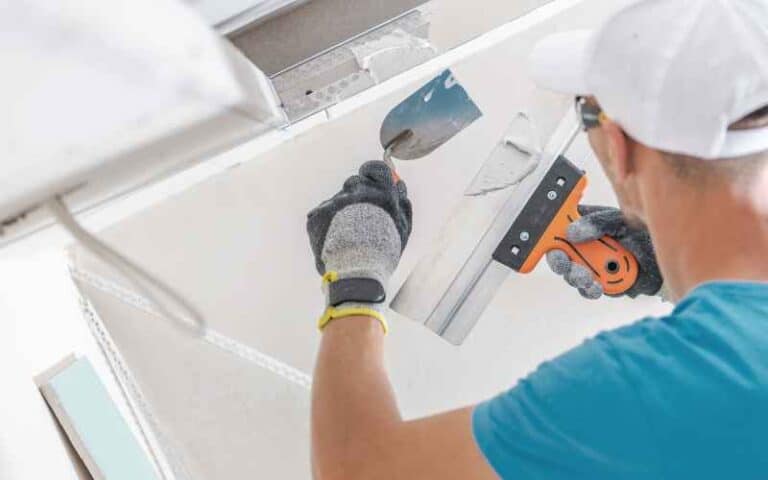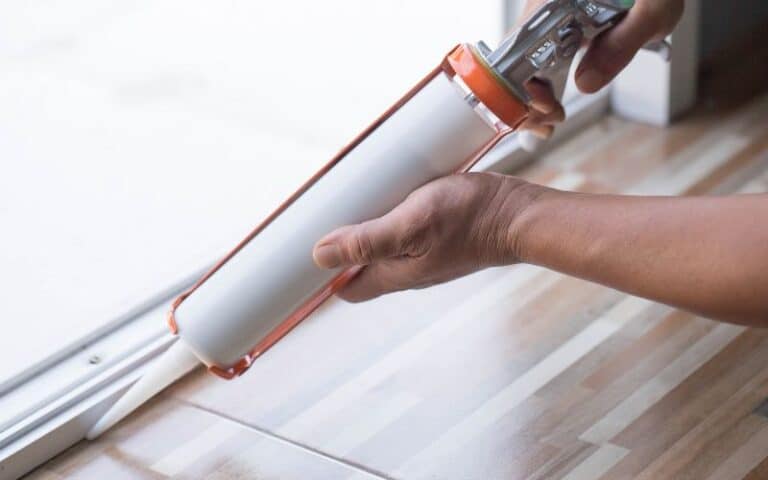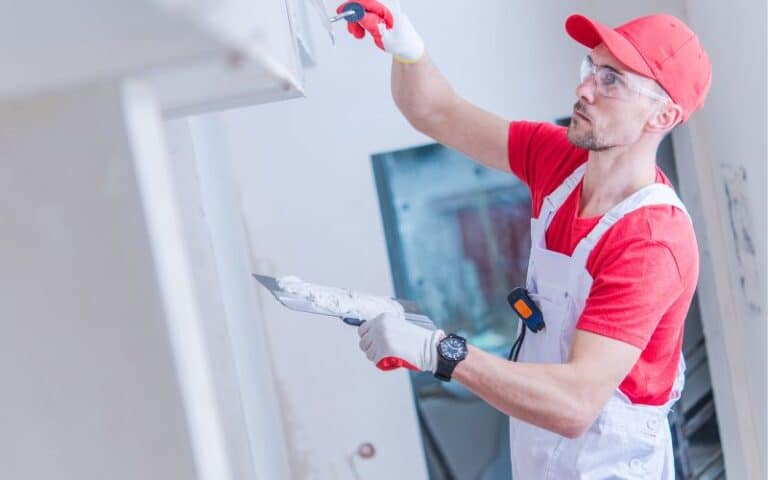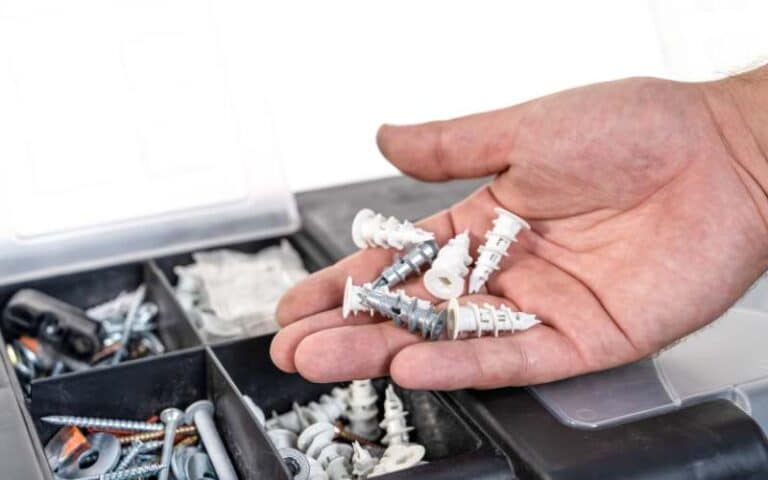Houses are often constructed with strong materials that can withstand harsh conditions.
However, these houses tend to wear out over time, and large gaps develop on the walls and floors.
In this scenario, opting for the best compound to save your home from further disaster is your best bet.
Now, that’s where Durabond chips in, but the question is; can Durabond seal these large gaps? Let’s find out!
You can use Durabond to seal large gaps on your walls. Durabond possesses an exceptional formulation that delivers a strong bond and low shrinkage. This enables you to finish your work faster, even if the drying conditions aren’t favorable. With Durabond, you can fix the cracks and paint your walls within two to three days.
In this article, I’ll walk you through the kind of gaps you can seal with Durabond and the best Durabond you can use for these gaps.
In the end, you’ll learn more about the effectiveness of Durabond and how to use it properly.
Ready for a Drywall Quiz?
Can You Close Large Gaps With Durabond?
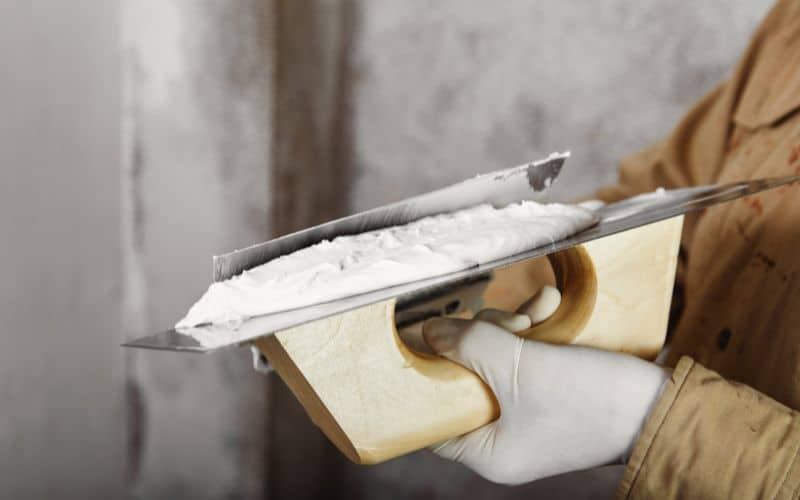
You can close large gaps with Durabond. Durabond is an exceptional compound that’s ideal for sealing cracks.
Its unique formula contains properties that enable quick setting and drying. Unlike other drywall compounds, Durabond comes in powdered form.
It doesn’t come in a pre-mix form because a little exposure to moisture ruins the entire content.
Hence, Durabond comes in a sealed paper bag to avoid the penetration of air or moisture.
Durabond is highly reliable for sealing large gaps in your drywall due to its high bond strength.
Plus, it’s not susceptible to humidity and can withstand harsh conditions.
Durabond is one of the finest creations in the US and is in high demand in the construction sector.
Hence, not only does it seal large gaps, but it’s also ideal for adding finishing touches to your house.
Let me elaborate on this. Suppose you want to utilize a concrete Patio for your house. You can settle for Durabond, as it will do the job perfectly.
You can use it for smoothing and finishing your ceiling. Furthermore, you can use Durabond to smooth and finish your drywall.
The best part about Durabond is that it dries up quickly. This means that if you have plans of plastering and painting on the same day, it’s highly possible to complete these tasks.
Therefore, Durabond enables you to complete your job within a short time.
How Large a Gap Can Durabond Fix?
Durabond can fix a large gap of ½ inch. It can also fix a gap of ¼ inch.
You can use Durabond to fix large gaps in your drywall without consulting a professional for assistance.
To do this, you need the following materials;
- Half bag of Durabond
- Mixing bowl
- Water
- Mixing knife
- ACRI-ADD™ acrylic fortifier
Here’s a detailed procedure to use Durable for fixing large gaps;
- First, measure the size of the gap using a measuring tape.
- Pour your desired quantity of water into a bowl.
- Add in the quantity of Durabond and ACRI-ADD™ acrylic fortifier you want.
- Mix them properly until you get the texture you want for the process.
- Afterward, fill the gaps with the quantity of the mixture.
- Smoothen the mixture and blend it with the wall. Otherwise, it’ll become too strong to remove.
Before you carry out this procedure, you must measure the quantity of water and Durabond you want to use.
Remember not to add water directly to the Durabond powder.
Always add Durabond to water to avoid unfortunate circumstances. For instance, water and Durabond usually engage in a chemical reaction.
This reaction is possible due to the presence of Calcium Sulfate Hemihydrate. This ingredient causes the hardening of Durabond.
Hence, when you add a little water to a bag of Durabond, the reaction occurs, and heat evolves.
This further spreads and adversely affects the content of the Durabond, which becomes unfit for use.
You can avoid this by preserving your Durabond in a cool and dry place. If you want to use it safely, get a dry spatula and reduce the quantity you want.
Tie the bag tightly with a rope to conserve its quality and effectiveness. Furthermore, you can use Durabond on the exterior of your house.
In other words, you can utilize Durabond to fill large holes in the external walls of your home.
You can easily fill the large gaps with Durabond. However, you can always seek the help of a professional if you don’t have any prior experience in plastering.
See More: Gap Between Soffit And Fascia (Reasons & Solutions)
Is Durabond a Good Wall Solution?
Durabond is an outstanding wall solution that fixes any crack or gap on your wall. Durabond is highly effective and lasts for a long time.
You can easily use it to seal the cracks that might begin to develop on your wall.
These cracks usually happen when your house is old and needs proper renovation.
On the other hand, your house might develop cracks over a short time when the materials begin to wear out. This only happens if the materials are of low quality.
These materials are susceptible to rot, moisture, and other harsh conditions. Hence, they begin to deteriorate, and your house develops cracks.
The best solution is to always settle for materials of high quality. These high-quality materials will keep your house strong for many years.
Plus, you can use Durabond to coat the interior and exterior walls.
The only downside is that Durabond hardens easily and dries up quickly. So, it might not be an ideal product for coating your walls.
For instance, it’ll harden if you prepare a mixture of water and Durabond and leave it for over 30 minutes without usage.
Although Durabond is smooth and brings out a nice texture, it does the opposite when you plaster it on your wall.
Let me explain vividly! Durabond usually takes approximately 30 minutes to harden. Hence, it would be best if you smoothened the edges of Durabond on the wall.
Otherwise, it’ll become hard and damage the overall appearance of your wall. The worst part is that it becomes too hard to dilute.
Therefore, if you want to opt for Durabond, you must work quickly. Ensure to smoothen the edges immediately after plastering the Durabond on the wall.
This way, you’ll have an appealing appearance that keeps your wall strong.
Do You Need To Prefill Large Gaps Before Applying Durabond?
You need to prefill large gaps before applying Durabond. Prefilling the gaps is crucial as it enables you to plaster the Durabond easily.
Large gaps give out an unappealing appearance and change the entire outlook of your house.
Prefilling these gaps can be quite challenging, especially when you don’t know what to do.
First, you need to examine the wall and know the exact extent of the gaps. This way, you can determine the quantity of Durabond to use.
You can use a Durabond to prefill the large gaps and apply it to smoothen the edges. However, you can opt for Sheetrock to prefill the large gaps.
Afterward, you can apply Durabond to add the finishing touches. Sheetrock is an exceptional compound with a high bond strength and can last long.
This compound is also resistant to UV rays and can withstand harsh conditions. Most times, Sheetrock comes in a pre-mix form.
In other words, the manufacturers usually add water to the powder. Therefore, you can use it without adding water to the mixture.
All you need to do is pour the mixture into a bowl and begin the process. Unlike Durabond, Sheetrock doesn’t harden easily.
Hence, you can dilute it and redesign it to your taste. Interestingly, Durabond and Sheetrock come from the same company(USG).
Although this fact is true, they harbor different properties. The table below will provide more insight into this point.
| Durabond | Sheetrock |
|---|---|
| It’s ideal for prefilling the seams of drywall. | It’s more appropriate for large prefilling gaps. |
| It isn’t easy to sand. | It’s easy to sand. |
| It’s difficult to dilute once it hardens. | It’s easy to dilute and re-plaster. |
| It’s not good for finishing coatings. | It’s good for finishing coatings. |
With the comparison above, you can easily choose the best compound to refill large gaps on your wall.
However, I’d highly recommend Durabond if you’re looking for something strong that’ll last long.
Nonetheless, you can settle for Sheetrock if you want to re-plaster your wall.
See More: Roof Sheathing Gap At Peak! (Beginners Guide)
Which Durabond Is Best For Large Gaps?
When choosing the best Durabond for the large gaps on your wall, you must consider a few factors.
Below are some of them;
- Quality
- Effectiveness
- Lifespan
- Time for drying and hardening
With these facts established, let’s look at some types of Durabond. This way, you’ll get to pick the best out of them.
#1. Durabond 210
This type of Durabond contains high-quality ingredients that give it a smooth texture. However, Durabond 210 consumes more time than other types of Durabond.
It takes roughly 180-240 minutes to harden completely. Plus, it consumes more than 48 hours to dry completely.
If you’re looking for something slow but effective, then Durabond 210 is your best bet.
#2. Durabond 90
This Durabond is highly effective and contains unique properties. Its bond strength is high and has a low shrinking rate.
This means that it can last for a long time without developing any problems. The 90 on the Durabond bag usually indicates the time it takes to harden.
This type takes approximately 80-130 minutes to set completely. Note that this time is different from the time it requires to dry.
Durabond 90 can consume up to 24-48 hours to dry completely. Although it’s good for sealing large gaps, it consumes a lot of time.
Nevertheless, if you want to take the process slowly, you can opt for Durabond 90.
#3. Durabond 45
This type of Durabond has high bond strength. It has a low shrinking rate and is not susceptible to humidity. Durabond 45 can withstand harsh conditions and still last long.
This compound is solely made with high-quality products that produce a smooth texture.
Durabond 45 consumes up to 30-80 minutes to set/harden. Furthermore, it dries up between 24-48 hours.
#4. Durabond 20
This Durabond is extremely fast and dries up easily. It contains the same features as Durabond 210, 90, and 45. Durabond 20 usually takes up to 20-30 minutes to set completely.
Plus, it takes up to 24 hours or less to dry. So, you can opt for this Durabond if you want something fast and efficient.
How Many Coats of Durabond Should You Apply on Drywalls?
You can apply two coats of Durabond on your drywall. Since Durabond is prone to harden easily, it’s advisable to work extremely fast when coating your drywall.
Ensure you smoothen the edges frequently. Otherwise, it’ll become hard and ruin the outlook of your home.
After adding the first coat, allow it to dry before adding the second coat.
The number of coats you want to add depends on how you want to design the interior and exterior appearance.
With two coats, Durabond provides a smooth texture that makes it easy to paint. It’s vital to allow your coats to dry completely before painting.
You might damage your drywall if you decide to paint it before it dries up.
Final Words
Durabond is undoubtedly the best alternative for sealing large gaps in your drywall, as it possesses exceptional properties.
The only downside is that it dries up easily and hardens within minutes. Nonetheless, you can use it to coat your drywall provided you work fast.

